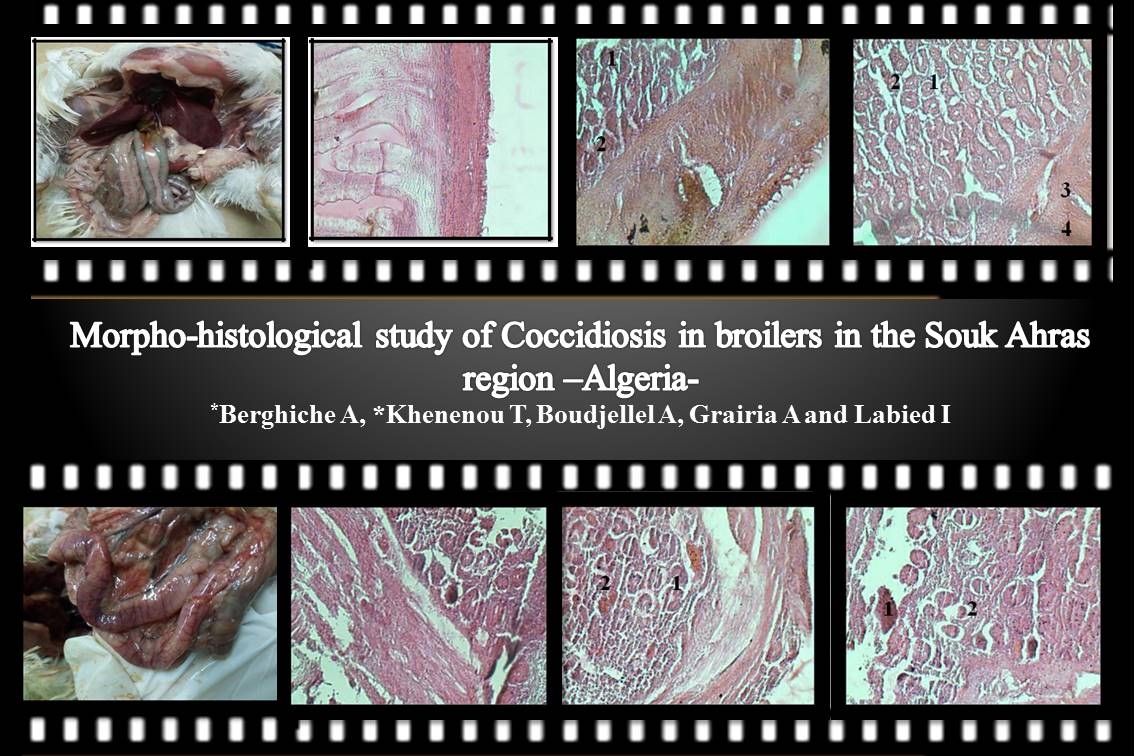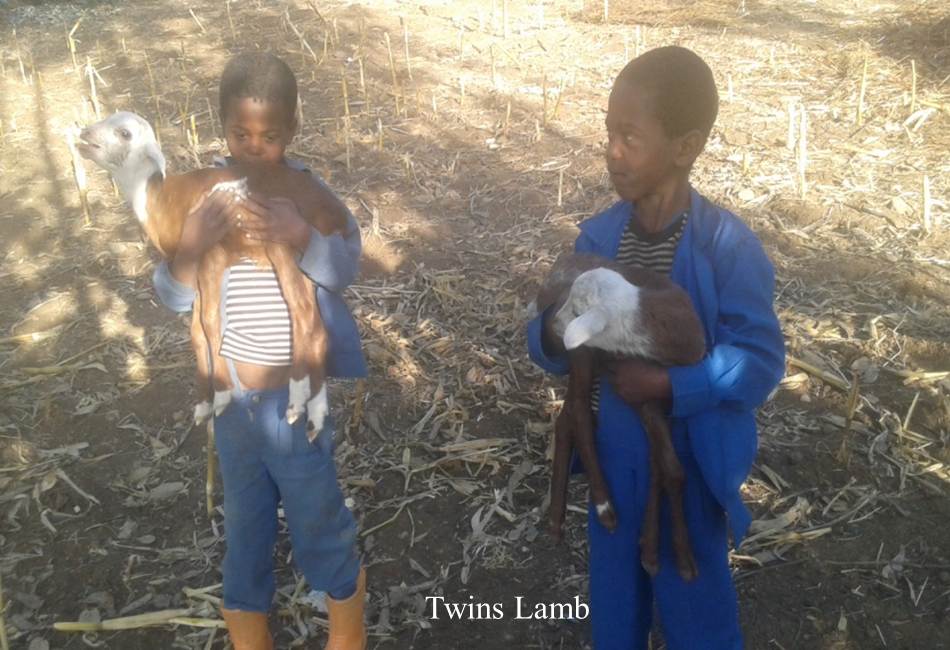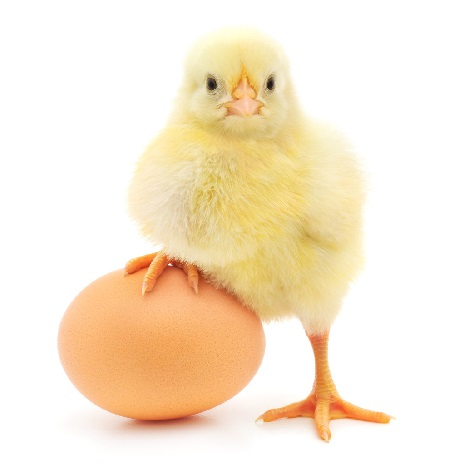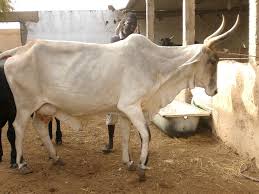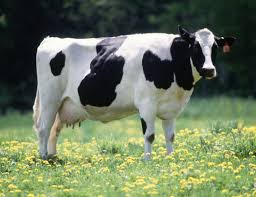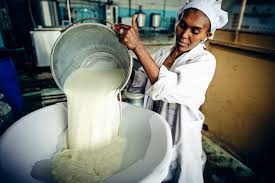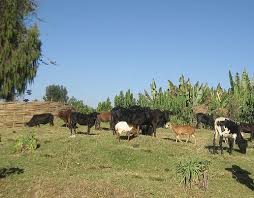Previous issue | Next issue | Archive
Volume 8 (6); November 25, 2018 [Booklet]
Morpho-histological study of coccidiosis in broilers in the Souk Ahras region, Algeria.
Berghiche A, Khenenou T, Amira B, Amina G and Labied I.
Online J. Anim. Feed Res., 8(6): 136-144, 2018; pii: S222877011800018-8
Abstract
The aim of this study was assess the macroscopic and microscopic appearance of the normal and the abnormal gut in coccidiosis disease of broiler chickens during post hatching age in souk Ahras area. The results showed that the small intestine is the most sensitive organ to avian coccidiosis. The necropsy showed that the lesions are expressed according to the species, A strong congestion with hemorrhagic area in cecum coccidiosis. Atrophy of the intestinal villous with thickening of the mucosa was observed in the case of intestinal Coccidiosis. Microscopic translation revealed hydropic degeneration and necrosis of enterocytes with pycnotic in the intestinal mucosa and the presence of strong enteritis. Coccidiosis is one of the most frequent parasitic diseases in poultry in Algeria, it takes many forms and occurs all types of poultry farming around the world, this illness has serious economic damage, an epidemiological surveillance plan for this disease is necessary in order to control its propagation and to reduce its risk.
Keywords: Broiler Chickens, Post Hatching Age, Coccidiosis, Macroscopic and Microscopic Appearance.
[Full text-PDF]
Evaluation of pre-weaning growth performance and survival rate of sheep in Hulet Eju Enesie district, East Gojjam zone, Ethiopia.
Lamesegn D, Tegegne F, Mekuriaw Y and Chanie D.
Online J. Anim. Feed Res., 8(6): 145-149, 2018; pii: S222877011800019-8
Abstract
The study was conducted in Hulet Eju Enesie District, East Gojjam Zone, Ethiopia, with the main objectives of evaluating pre-weaning growth performance of sheep. The study district was stratified in to Dega, Weina dega and Kolla agro-ecologies. A total of 48 (16 from each agro-ecology) late pregnant sheep flocks were selected purposely for monitoring. The data were collected from sampled households using semi-structured questionnaires and through monitoring. Birth weight and 90 days weight were taken using 50kg weighing balance with 200g precision. Collected data monitoring of lambs were subject to GLM analyzed by using SPSS software (version 20.0). The average birth weight, 90 days weight and average growth rate of lambs were 2.46 ± 0.07 kg, 10.26 ± 0.12 kg and 89.66 ± 1.28 g/day which were significantly different (P< 0.05) among agro-ecology, breed, parity, types of birth and sex of lambs. Survival rate of lambs was 91.67%. Therefore, birth weight, pre-weaning growth weight, pre-weaning growth rate and survival rate were significantly affected by agro-ecology, parity, litter size and sex.
Keywords: Birth weight, Daily weight gain, Pre-weaning growth rate and Survival rate.
[Full text-PDF]
Husbandry practices of sheep in Hulet Eju Enesie district, East Gojjam zone, Ethiopia.
Lamesegn D, Tegegne F, Mekuriaw Y and Ayalew H.
Online J. Anim. Feed Res., 8(6): 150-157, 2018; pii: S222877011800020-8
Abstract
TThe study was conducted in Hulet Eju Enesie District, East Gojjam Zone, Ethiopia, with the main objective of assessing husbandry practices. The study district was stratified in to Dega, Weina Dega and Kolla agro-ecologies. Six kebeles were selected by proportional allocation methods. For survey, 150 sample households were selected for interviewed by using simple random sampling. In addition, 72 households were selected for group discussion by using simple random sampling, male and female with equal proportion. Collected data from survey were subject to Descriptive statistics, ANOVA and Chi-square (χ2) by using SPSS software (ver. 20). The mean flock size per household was 12.52 in Dega, 9.43 in Weina Dega and 8.32 in Kolla (P< 0.05). The purpose of keeping sheep were sale (income source), meat and saving purpose as indicated with index value of 0.48, 0.28 and 0.12 respectively. Major feed source varied according to seasons; communal grazing 37.1% from (Sep-Nov), Grazing after math 47% from (Dec-Feb), Crop residue 38.1% from (Mar - May) and private grazing 31.8% from (Jun–Aug). Haricot bean straw (64%) is a major crop residue. Chi-square (χ2) analysis result showed that there was significant difference (P< 0.05) on types of supplementary feeds in different agro-ecological zones. Atela (97.3%) was dominant supplementary feed. Sheep house constructed attached to the family house and sharing a common wall is the most common sheep house. Mean age for castration and tail docking were 14.84 and 3.77 months respectively. Selection criteria of sheep for castration and fattening were physical characteristics, breed and conformation with index value 0.43, 0.26 and 0.23 respectively. Washera (79.3%), crossbred (12%) and both Washera crossbred and “local “sheep (17.3%) respectively. Age at first mating, age at first lambing, lambing interval, slaughtering age for male, slaughter age for female and marketing age of sheep were 7.47, 12.46, 8.05, 5.96, 6.25, 6.5 months respectively. Litter size (mean 1.55) was significantly (P< 0.05) different among agro-ecologies. Disease, and parasites, and feed shortage were reported to be the two major constraints of sheep production in the area with index value 0.381 and 0.357.
Keywords: Breed, Castration Practice, Constraints, Culling Practice, Husbandry practice, Opportunities, Tail docking, Weaning
[Full text-PDF]
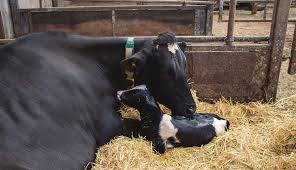
Research Paper
Diagnosis of subclinical endometritis during postpartum period on subsequent pregnancy in small, medium and large scale dairy farms in and around Gondar, North West Ethiopia.
Moges N.
Online J. Anim. Feed Res., 8(6): 158-163, 2018; pii: S222877011800021-8
Abstract
During the study period 147 apparently healthy 3rd trimester pregnant cows were selected in smallholder, medium and large scale dairy farms in and around Gondar, North Western Ethiopia from January 2015 to September 2017. After calving, endometrial samples were collected from the uterus of apparently normal cows by using uterine lavage technique on postpartum dairy cows from 40-60 days. Collected samples were centrifuged and a drop of sediment was streaked onto a clean microscopic slide and stained with giemsa. The percentage of polymorphonuclear cells (neutrophils) was calculated. It was found that increase in the number of neutrophils correlated with decrease in pregnancy. The incidence of subclinical endometritis was different in small, medium and large scale dairy farms 25 (37.88%), 29 (43.94%) and 13 (18.18%), respectively. The mean number of services per conception was found as2.04 for subclinical endometritis positive cows. In the present study endometrial cytology revealed that the PMN count of 3% and above was suggestive for subclinical endometritis. In conclusion, subclinical endometritis diagnosed by endometrial cytology was associated with reduced rate of pregnancy.
Keywords: Endometrial Cytology, Neutrophiles, Pregnancy, Subclinical Endometritis
[Full text-PDF]
Relationship between eggs shape index and embryonic mortality
Jabbar A, Hameed A, Ditta YA and Riaz A.
Online J. Anim. Feed Res., 8(6): 164-168, 2018; pii: S222877011800022-8
Abstract
The study was conducted to assess the effect of eggs shape on hatchery parameters. The eggs shape (SI) is a critical tool to investigate the outcome from eggs during incubation. In this experiment three groups of good quality intact eggs (each n= 500) having thick shell without any kind of contamination were collected from three different broiler breeders’ farms SP117 (Ross), SSF (Ross) and SP 118 (Ross).The manage mental and incubation conditions were same for all three groups. The SI was measured and maximum deviation from standard was found for SP117 (80.94±0.04a, 78.46±0.07b, 76.57±0.04c) then SSF and SP118 respectively. Due to SI deviation hatchability % (78.25±0.01a, 81.17±0.09b, 91.35±0.07c), candling% (8.67±0.02a, 9.36±0.06b, 4.71±0.09c), dead in shell % (13.08±0.10a, 6.94±0.03b, 3.94±0.07c), chick yield % (67.31±0.09a, 68.24±0.01b, 69.10±0.05c), hatch window hrs (28-30±0.03a, 24-26±0.07b, 22-24±0.03c) were significantly different for SP117, SSF and SP118 respectively. Water loss was significantly higher (P<0.05) for SP117 (12.01±0.03a) as compare to SSF and SP118 (11.89±0.04b, 11.87±0.04b). The effect of eggs shape index was also found on mal-position and mal-formations. The maximum dead and cull chicks 0.5% were found for SP117 as compare to SSF or SP118. Similarly mal-position head in small of eggs and feet over head were found maximum for SP117 0.3% and 0.8% respectively. The maximum mal-formation ectopic viscera 0.7 % and excess albumin 0.5% was found for SP 117 as compare to SSF or SP118. The maximum dead in shell, mal-position and mal-formation were found for SP 117 due to maximum deviation from SI as compare to SSF or SP118. Eggs shape Index is a good tool to access the quality of eggs.
Keywords: Dead in shell, Hatchability, Mal-Position, Mal-Formation, Shape Index
[Full text-PDF]
Review on productive and reproductive performance of indigenous dairy cattle breeds under farmer’s management practices in Ethiopia.
Ayalew H, Chanie D, Lamesegn D.
Online J. Anim. Feed Res., 8(6): 169-174, 2018; pii: S222877011800023-8
Abstract
The aim of the review is to summarize the Productive and reproductive performance of different indigenous dairy cattle breeds under farmer’s management practices. Ethiopia is the home of large numbers of livestock due to having varied and extensive agro-ecological zones. From the total annual milk produced cattle milk, is the most prominent compared to other livestock species in Ethiopia. Numerous finding showed that calving interval, daily milk yield, lactation length and age at first calving are one of the major measures of productive and reproductive performance parameters for dairy cattle production. Different report indicated that productive and reproductive performances of cattle are very poor due to varied factors; the causes for low performances of dairy cattle were genetic and environmental factors like feeding, housing and health care. In Ethiopia most of (98.20%) cattle breeds are local breeds the remaining (1.8%) are hybrid and exotic breeds. Then, the genetic performances of these breeds are poor, even though they have good adaptation in harsh environmental conditions. So, training and awareness creation should be given particularly to the farmers on major management practices like feeding, housing and health care and genetic improvement strategies should planned and practiced.
Keywords: Dairy, Ethiopia, Productive performance, Management, Reproductive performance
[Full text-PDF]
Effect of feeding urea-molases treated teff straw on milk yield and composition of cross bred dairy cows.
Demoz Y, Assefa A and Endale K.
Online J. Anim. Feed Res., 8(6): 175-179, 2018; pii: S222877011800024-8
Abstract
An experimental work was conducted on crossbred lactating dairy cows in University of Gondar dairy farm with the objective of investigating the effect of urea-molasses treated teff straw feeds on milk yield and its composition. Six Holstein-Friesian crossbred experimental animals with the blood level of 75%, the first stage of lactation and all on fourth parity were purposively selected. Experimental animals were assigned to the three treatments by lottery system using completely randomized design. Treatments were prepared with the protocol of low protein concentrates mix + untreated straw (T1) as a control group, low protein concentrates mix + urea molasses treated straw (T2) and high protein concentrates mix + untreated straw (T3). The straw was sprayed with 5kg of urea, 50 liters of water and 5 kg of molasses solution per 100 kg of Teff straw incubated for 14 days in a pit silo. About 250 ml of milk was taken every week for milk composition analysis during the study. The result of this study indicated that statistically significant (P<0.05) difference on daily milk yield between cows fed on low protein concentrates mix plus urea molasses treated straw (T2) and cows fed on low protein concentrates mix (LPCM) + untreated straw (US) (T1). Similarly, there was statistically significant (P< 0.05) difference on daily milk yield between cows fed on low protein concentrates mix plus urea molasses treated straw (T2) and cows fed on high protein concentrates mix (HPCM) + untreated straw (US) (T3). But there was no statistically significant (P> 0.05) difference among treatments for fat, protein, lactose and ash contents of milk. The result also showed no statistically significant (P> 0.05) difference among treatments for dry matter intake. From this result, it can be concluded that treating crop residues like straw with urea and molasses can improve milk yield of dairy cows but has less impact on milk composition. The statistically non significant differences of milk yield between cows fed on low protein concentrate and high protein concentrate invites researchers to investigate the nutritional qualities of ingredients used in the high protein concentrate mixture.
Keywords: Composition, Milk Yield, Molasses, Treatment, Urea
[Full text-PDF]
Dairy cattle production, processing and handling of milk and milk products in Enemay district, Amhara, Ethiopia.
Ayalew H, Yinnesu A and Abatenhe A.
Online J. Anim. Feed Res., 8(6): 180-184, 2018; pii: S222877011800025-8
Abstract
The objective of the study was to assess dairy cattle production systems, processing and handling systems of cow milk and milk products in the highlands of Ethiopia. The study was conducted from 2017 to 2018 in Enemay district, Amhara, Ethiopia. The sample kebeles and household for the study were selected based on stratification and purposive sampling techniques. Three rural and two urban and pre urban kebeles were selected. From each kebele 30 households (total of 150 households) were selected randomly from those have at least two lactating cows. Dairy cooperatives and private farms were included during the study. Descriptive statistics was employed for data analysis using Statistical Procedures for Social Sciences (SPSS) version 20.0. Dairy cattle production systems that identified in the study areas were rural smallholder or mixed crop- livestock production which accounts 98% and the rest 2% were urban and pre urban system. Out of the total milk produced per households per day 0.42±1.8 liters was used for traditional milk processing. The study also revealed that 40.2% of the respondents were process milk into different milk products. The three most prioritized milk and milk products in the area were butter, ghee and whole milk with their ascending ranking order. The finding revealed that most of respondents (89.4 %) did not use udder washing before milking. The majority of the respondents were practiced washing of their hands (73.6%) and milk utensils (90.6%) before milking. There should be training for farmers and dairy cooperatives about milking hygienic practices, feeding and health care managements for their dairy cattle animals. The study is also recommend that improved and appropriate milk processing technologies like churner and cram separator should be accessible in place to improve milk processing for sustainable dairy production.
Keywords: Dairy cattle production, East Gojjam, Enemay, Milk handling, Milk processing
[Full text-PDF]
Review on effects of climate change on livestock production in Ethiopia.
Lamesegn D.
Online J. Anim. Feed Res., 8(6): 185-189, 2018; pii: S222877011800026-8
Abstract
The main aim of this review is to assess the effects of climate change on livestock production in Ethiopia. Climate disruptions cause a huge impact on the agricultural production system. It is a primary factor for agriculture productivity. Livestock and climate change have a close relationship. Climate change could affect the costs and returns of livestock production. It has a significant effect on growth and production of animals. Climate change impairs feed intake and performance in the lactating period. Mid lactating dairy cows showed a higher decline in milk production (-38%) when the animals were exposed to heat. The higher production animals are the most affected. Heat stress increases the loss of body fluids due to sweating and panting and results in an altered water balance of the body and the osmolarity of cells. Global warming will also alter the distribution of animal diseases and the vectors. Warmer and wetter weather will increase the risk and occurrence of animal diseases, because species that serve as disease vectors, such as biting flies and ticks, are more likely to survive year-round. The most important effects of climate change on livestock production are changing the animal feed resources. It impact on rangeland biodiversity which influences livestock production. Change in precipitation patterns and intensity, increasing atmospheric water vapor, evaporation, water temperatures and changes in soil moisture and runoff. An increase in uterine temperature of 0.5°c above average is associated with a decline in conception rate of 12.8%. Heat stress compromises oocyte growth in cows by altering progesterone secretion.
Keywords: Climate, Climate Change effect, Disease, Livestock and Production
[Full text-PDF]
Previous issue | Next issue | Archive
This work is licensed under a Creative Commons Attribution-NonCommercial 4.0 International License.
| < Prev | Next > |
|---|

